(Siegen 1577–1640 Antwerp) The ‘Spinola’ Rubens, The Christ Child and the Infant Saint John the Baptist, oil on canvas, 112 x 149.5 cm, framed Provenance: Collection of the Spinola family, Genoa (prior to 1862); Marchese Ippolito Spinola (1814–1893), Genoa (1862); Society of Pio Ricovero, Genoa (1862); Prof. Giuseppe Isola (1808–1893), Genoa; Prof. Giovanni Battista Villa (1832–1899), Genoa; Sir John S. Murray, Galashields and Selkirk, Scotland (1911 - before 1954); Szerkski, Bern/Zurich; The Norton Galleries, New York; Collection of Walter P. Chrysler (1909–1988), New York (1954–1975); Private collection, Dallas (1975–1981); Private European collection; sale, Dorotheum Vienna, 13 April 2011, lot 423; Private European collection Exhibited: Brussels, Palais du Cinquantenaire, L’Art Belge au XVIIème Siècle, 1910 (as Rubens); London, Royal Academy, Winter Exhibition, Works by the Old Masters and Deceased Masters of the British School, 1910 (as Rubens); Portland/ Washington/Seattle/San Francisco/Los Angeles/ Minneapolis/St. Louis/Kansas City/Detroit/Boston/Fort Worth/Tulsa/Austin, Paintings from the Collection of Walter P. Chrysler Jun., 1956/57 (as Rubens) Literature (selected): M. Rooses, L’Oeuvre de P. P. Rubens, Antwerp 1886, p. 250, no. 185, fig. 66 (as Rubens); W. L. Crowdy et al., The Spinola Rubens, An Appreciation, Edinburgh 1911 (as Rubens); E. Larsen, Seventeenth-Century Flemish Painting, 1985, p. 124, fig. 20 (as Rubens); M. Jaffé, P. P. Rubens, Catalogo Completo, Milan 1989, p. 306, under no. 914 (as Workshop of Rubens) Hans Vlieghe confirmed that the present canvas was executed in Rubens’s workshop (oral communication, January 2011). We are grateful to Fiona Healy for confirming the attribution of the present painting to Rubens’s workshop (on the basis of a photograph). Nils Büttner examined the painting in the original (11 February 2011) and inspected it by infrared reflectography at the Staatliche Akademie der Bildenden Künste, Stuttgart, Büttner supported the attribution of the present picture to Rubens’s workshop, but also discerned finishing touches added by Rubens himself. Büttner notes that the painting is a composite of several canvases added to one another, which was common practice in Rubens’s workshop, with the largest canvas size corresponding to Rubens’s customary Brabant measure, 105 centimetres in width. A woodcut by Christoffel Jegher (Detroit Institute of Arts, inv. no. F78.6) suggests that Jegher referred to the present painting as a model. When first presented to the American public in 1954 as part of the Chrysler Collection, the present work was described as one of the most famous paintings by Rubens in the United States. Its attribution was given further credence by its illustrious and far-reaching provenance. At the time of its sale by Marchese Spinola in 1862, it had been in the possession of the famous Genoese patrician family for more than 200 years. The presence of a smaller version, with distinct modifications recorded in the Palazzo Balbi, Genoa, suggest that within the city-state and beyond the composition was already one of the master’s most celebrated during the first half of the 17th century. Between 1603 and 1606 Rubens was active in Genoa, later writing and illustrating a book depicting its noble architecture Palazzi di Genova, published in Antwerp 1622, and the great Flemish pictor doctus most probably knew the present picture’s first owner personally; in all probability this was the Hapsburg’s favoured Imperial commander Ambrogio Spinola. Rubens painted at least seven portraits of Spinola and his family (between 1606 and 1608). The present painting is generally dated by scholars to between 1615 and 1625 (Justus Müller-Hofstede dates it around 1633). However, as Rubens’s portraits executed in Genoa date from an earlier period, they cannot be linked to the genesis of the present picture. The present work appears to have been acquired by the family together with a later portrait of Am
(Siegen 1577–1640 Antwerp) The ‘Spinola’ Rubens, The Christ Child and the Infant Saint John the Baptist, oil on canvas, 112 x 149.5 cm, framed Provenance: Collection of the Spinola family, Genoa (prior to 1862); Marchese Ippolito Spinola (1814–1893), Genoa (1862); Society of Pio Ricovero, Genoa (1862); Prof. Giuseppe Isola (1808–1893), Genoa; Prof. Giovanni Battista Villa (1832–1899), Genoa; Sir John S. Murray, Galashields and Selkirk, Scotland (1911 - before 1954); Szerkski, Bern/Zurich; The Norton Galleries, New York; Collection of Walter P. Chrysler (1909–1988), New York (1954–1975); Private collection, Dallas (1975–1981); Private European collection; sale, Dorotheum Vienna, 13 April 2011, lot 423; Private European collection Exhibited: Brussels, Palais du Cinquantenaire, L’Art Belge au XVIIème Siècle, 1910 (as Rubens); London, Royal Academy, Winter Exhibition, Works by the Old Masters and Deceased Masters of the British School, 1910 (as Rubens); Portland/ Washington/Seattle/San Francisco/Los Angeles/ Minneapolis/St. Louis/Kansas City/Detroit/Boston/Fort Worth/Tulsa/Austin, Paintings from the Collection of Walter P. Chrysler Jun., 1956/57 (as Rubens) Literature (selected): M. Rooses, L’Oeuvre de P. P. Rubens, Antwerp 1886, p. 250, no. 185, fig. 66 (as Rubens); W. L. Crowdy et al., The Spinola Rubens, An Appreciation, Edinburgh 1911 (as Rubens); E. Larsen, Seventeenth-Century Flemish Painting, 1985, p. 124, fig. 20 (as Rubens); M. Jaffé, P. P. Rubens, Catalogo Completo, Milan 1989, p. 306, under no. 914 (as Workshop of Rubens) Hans Vlieghe confirmed that the present canvas was executed in Rubens’s workshop (oral communication, January 2011). We are grateful to Fiona Healy for confirming the attribution of the present painting to Rubens’s workshop (on the basis of a photograph). Nils Büttner examined the painting in the original (11 February 2011) and inspected it by infrared reflectography at the Staatliche Akademie der Bildenden Künste, Stuttgart, Büttner supported the attribution of the present picture to Rubens’s workshop, but also discerned finishing touches added by Rubens himself. Büttner notes that the painting is a composite of several canvases added to one another, which was common practice in Rubens’s workshop, with the largest canvas size corresponding to Rubens’s customary Brabant measure, 105 centimetres in width. A woodcut by Christoffel Jegher (Detroit Institute of Arts, inv. no. F78.6) suggests that Jegher referred to the present painting as a model. When first presented to the American public in 1954 as part of the Chrysler Collection, the present work was described as one of the most famous paintings by Rubens in the United States. Its attribution was given further credence by its illustrious and far-reaching provenance. At the time of its sale by Marchese Spinola in 1862, it had been in the possession of the famous Genoese patrician family for more than 200 years. The presence of a smaller version, with distinct modifications recorded in the Palazzo Balbi, Genoa, suggest that within the city-state and beyond the composition was already one of the master’s most celebrated during the first half of the 17th century. Between 1603 and 1606 Rubens was active in Genoa, later writing and illustrating a book depicting its noble architecture Palazzi di Genova, published in Antwerp 1622, and the great Flemish pictor doctus most probably knew the present picture’s first owner personally; in all probability this was the Hapsburg’s favoured Imperial commander Ambrogio Spinola. Rubens painted at least seven portraits of Spinola and his family (between 1606 and 1608). The present painting is generally dated by scholars to between 1615 and 1625 (Justus Müller-Hofstede dates it around 1633). However, as Rubens’s portraits executed in Genoa date from an earlier period, they cannot be linked to the genesis of the present picture. The present work appears to have been acquired by the family together with a later portrait of Am
.jpg)

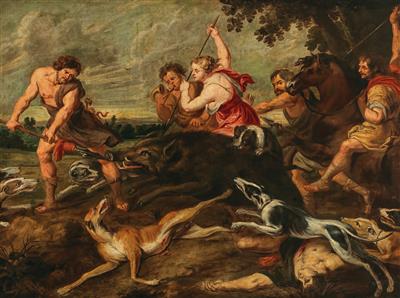
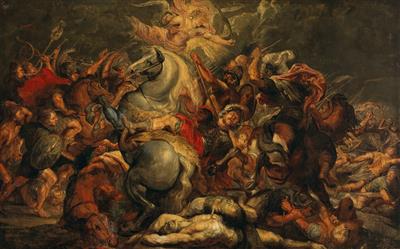




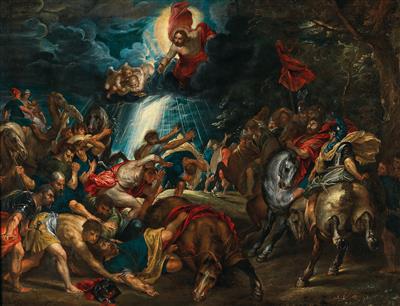
.jpg)

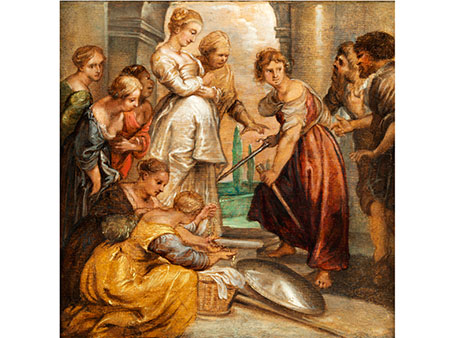


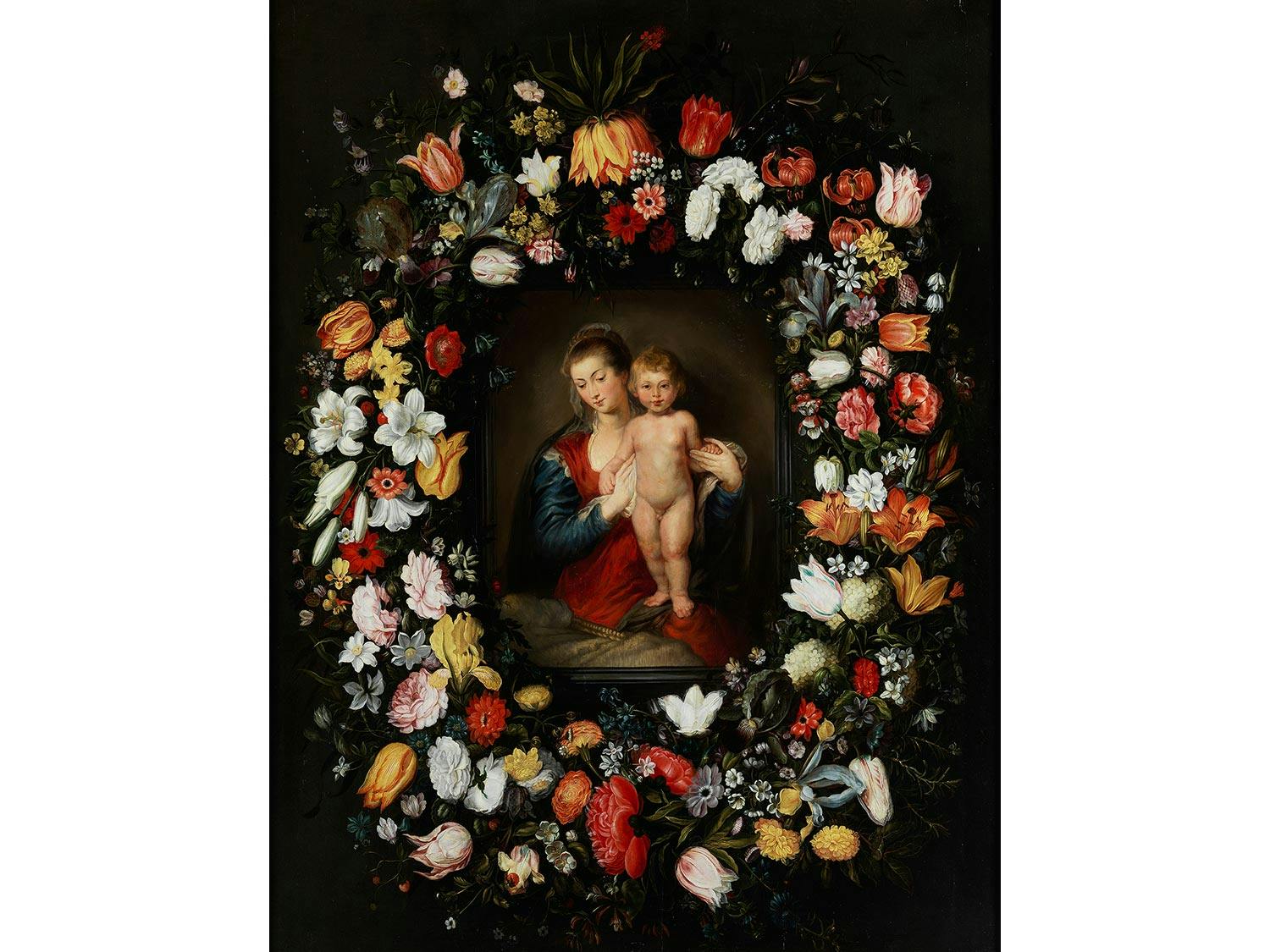
Testen Sie LotSearch und seine Premium-Features 7 Tage - ohne Kosten!
Lassen Sie sich automatisch über neue Objekte in kommenden Auktionen benachrichtigen.
Suchauftrag anlegen